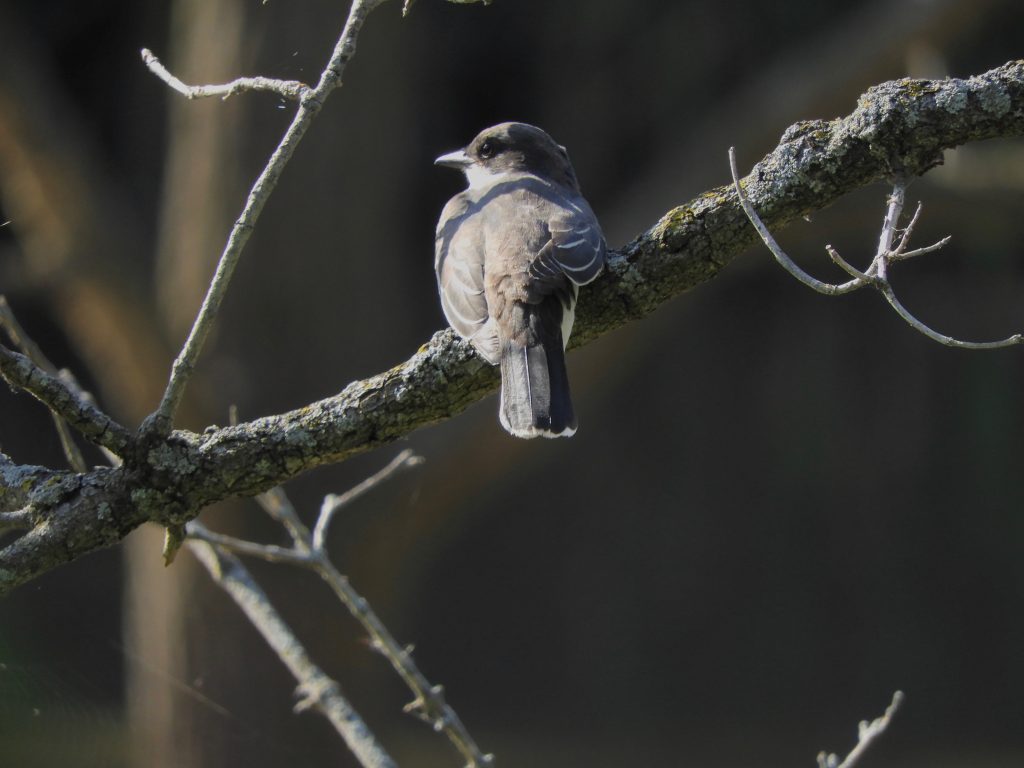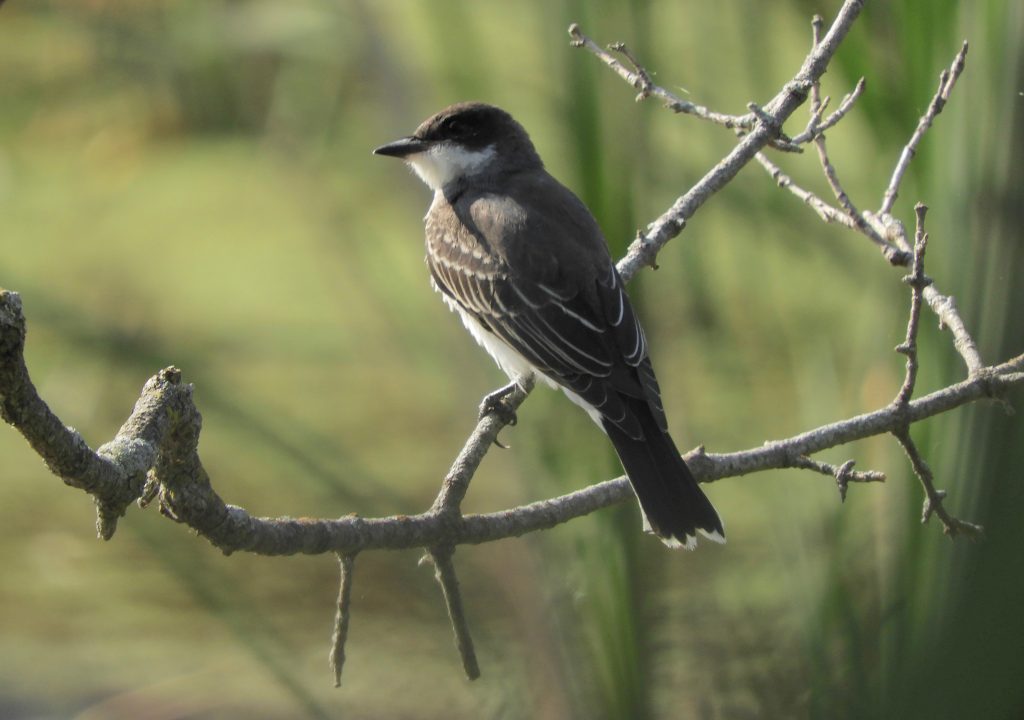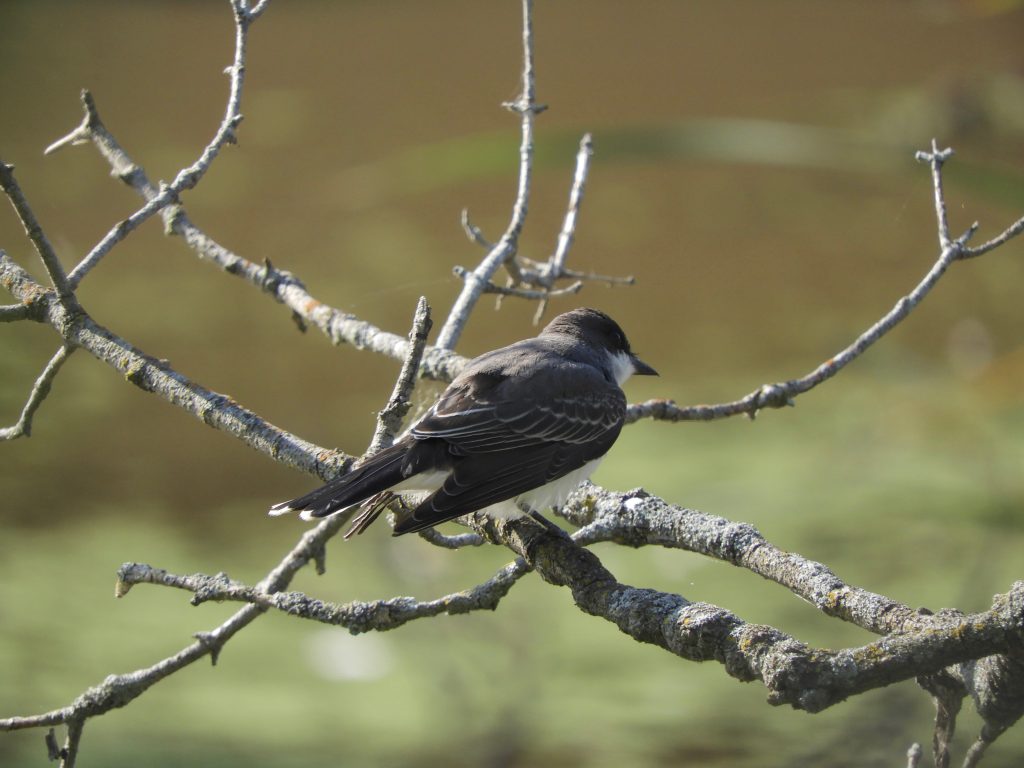August 13 2019. Hendrie Valley, Burlington, ON. Just two weeks from now we will start monitoring the fall migration, counting birds in what is rather like watching groups of partygoers leave for home, a few at a time until only the clean-up remains. It took well over two hours to walk around one of the transect routes, I hadn’t expected to take that long but the birding was good with little evidence of the great rush to come.
For a while I thought it was going to be all Black-capped Chickadees, White-breasted Nuthatches and Red–winged Blackbirds. Then the clear and strident song of a Carolina Wren was an encouraging change of pace because their population took a big hit in last winter’s deep and prolonged cold; by morning’s end I’d counted three of them.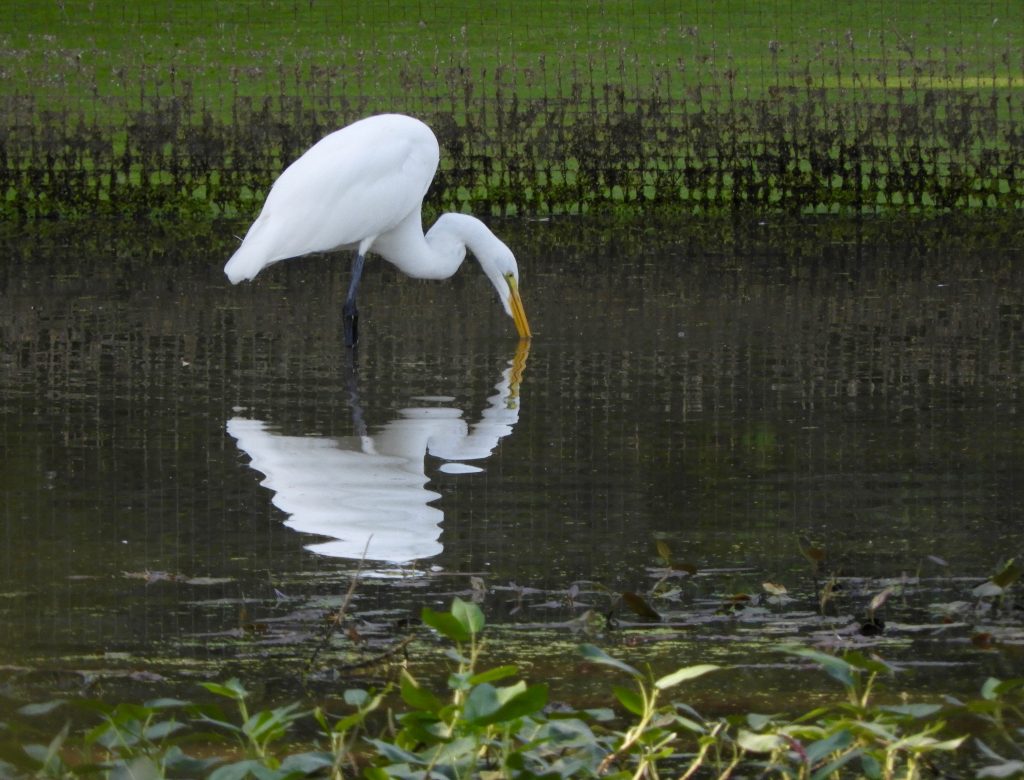
Perhaps the most captivating was this Great Egret. Caught in the bright light against a dark backdrop it made a nice picture reflected in the waters, it was my Bird of the Day although there were several other highlights. I watched a family group of Eastern Kingbirds for a while and in these photos, I think a parent/adult can be identified by the worn and tattered white tail-feather ends whereas the youngsters’ are new, tight and tidy. (Also, I think the youngster looks hunched and insecure.)
A pair of Lesser Yellowlegs and a Spotted Sandpiper worked along the muddy margins of the small river and two Belted Kingfishers watched quietly for a fishy meal.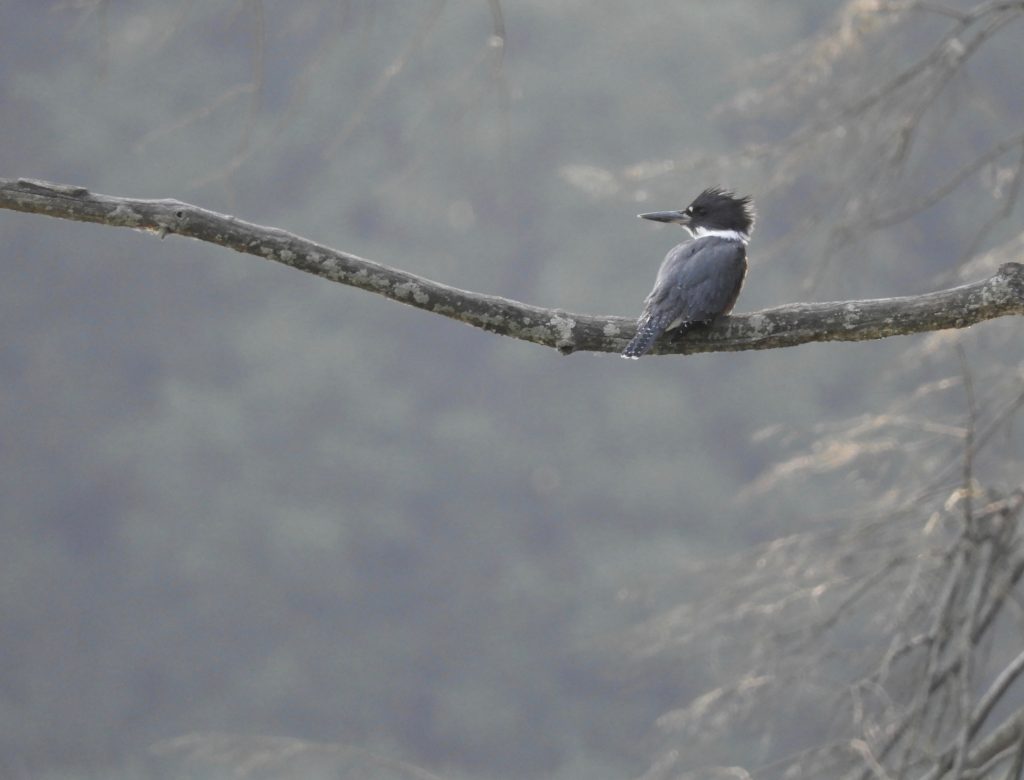
Along a woodland path I noticed a pair of Song Sparrows foraging for food followed closely by a fledgling Brown Cowbird. Although the sparrows never did offer it food I’m inclined to think the pair had been its host parents until very recently when they decided it is big enough to fend for itself. The Brown Cowbird is an obligate brood-parasite and Song Sparrows are sometimes luckless hosts. (Brood parasites are organisms that rely on others to raise their young. The strategy appears among birds, insects and some fish. Wikipedia.)
I noted 34 species this morning and the only ones showing any apparent change in behaviour were the many Common Grackles now starting to socialise in loose flocks in preparation for heading south in a month or so. But conspicuously absent was any sign or sound of Warbling or Red-eyed Vireos, Yellow Warblers, Tree Swallows or Common Yellowthroats.
